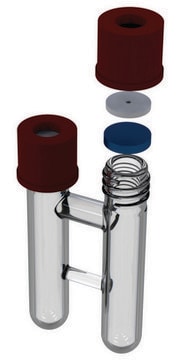01422
Melting point standard 79-81°C
analytical standard
Synonym(s):
Naphthalene
About This Item
Recommended Products
grade
analytical standard
vapor density
4.4 (vs air)
vapor pressure
0.03 mmHg ( 25 °C)
autoignition temp.
978 °F
shelf life
limited shelf life, expiry date on the label
expl. lim.
5.9 %
bp
218 °C (lit.)
mp
79-81 °C (±0.3°C)
80-82 °C (lit.)
application(s)
food and beverages
pharmaceutical
SMILES string
c1ccc2ccccc2c1
InChI
1S/C10H8/c1-2-6-10-8-4-3-7-9(10)5-1/h1-8H
InChI key
UFWIBTONFRDIAS-UHFFFAOYSA-N
Looking for similar products? Visit Product Comparison Guide
General description
Application
Additionally, this mp standard is also used as a temperature calibration standard in thermal studies.
Features and Benefits
- Melting point calibration standard traceable to primary standards (LGC, London)
- Grade: Analytical Standard
- Standard deviation up to ± 0.3 °C
- Provided with certificates of analysis and safety data sheet
Signal Word
Warning
Hazard Statements
Precautionary Statements
Hazard Classifications
Acute Tox. 4 Oral - Aquatic Acute 1 - Aquatic Chronic 1 - Carc. 2 - Flam. Sol. 2
Storage Class Code
4.1B - Flammable solid hazardous materials
WGK
WGK 3
Flash Point(F)
173.3 °F - closed cup
Flash Point(C)
78.5 °C - closed cup
Personal Protective Equipment
Choose from one of the most recent versions:
Already Own This Product?
Find documentation for the products that you have recently purchased in the Document Library.
Customers Also Viewed
Our team of scientists has experience in all areas of research including Life Science, Material Science, Chemical Synthesis, Chromatography, Analytical and many others.
Contact Technical Service












